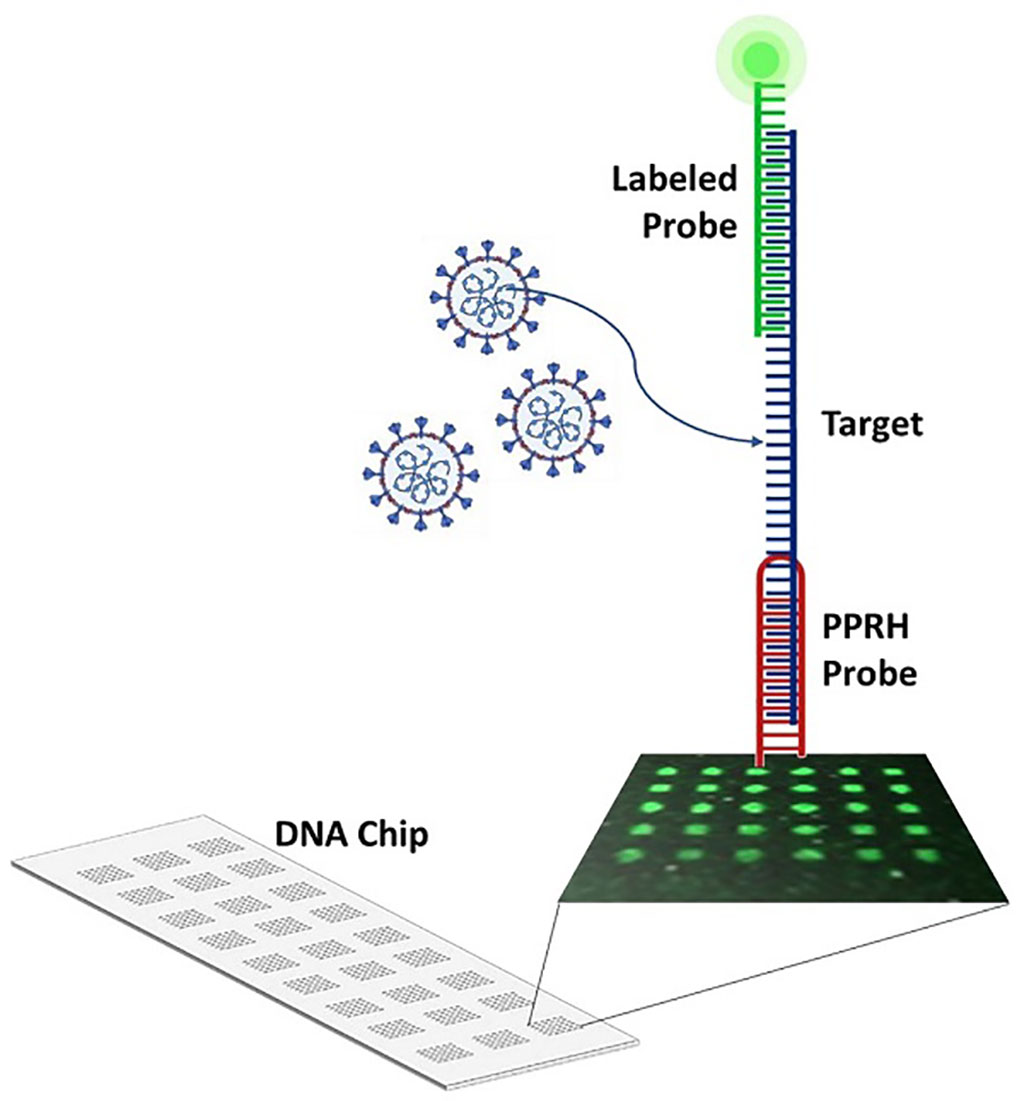New Method to Detect RNA Viruses More Effective and Faster than PCR Test
Posted on 02 Mar 2023
A new innovative method to detect RNA viruses based on the triplex-forming probe technology paves the way for new options for detecting viruses such as SARS-CoV-2, the influenza A virus (H1N1) or the respiratory syncytial virus (RSV), a pathogen that affects newborn babies and needs careful differential diagnosis.
The new methodology, called the Triplex Enhanced Nucleic Acid Detection Assay (TENADA), is based on the ability of polypurine hairpins (PPRHs) designed by the cancer therapy group at the University of Barcelona (Barcelona, Spain) to capture viral RNA and form a high-affinity triplex. When this hybrid structure is connected to a molecular probe and placed in contact with the sample from the affected patient, a detection signal of the viral agent is obtained. One advantage in the detection of viral RNA is that the PPRH methodology can be applied without the intervention of reverse transcriptase - the enzyme that converts RNA to DNA - or the thermocycler (the device that amplifies samples of genetic material with the polymerase chain reaction or PCR). In addition, it has a sensitivity and specificity equivalent to that of the PCR test and can provide results in less than an hour.

As part of the study, the team used the sandwich hybridization strategy in several biodetection devices. This strategy uses two oligonucleotides: a triplex-forming PPRH hairpin acting as a capture probe and a labeled duplex-forming DNA oligonucleotide acting as a detection probe. This methodology was implemented in a compact electrochemical device that integrates a two-electrode electrochemical cell on a chip and a fluidic component on paper, and in a thermal lateral flow system implemented in nitrocellulose and using plasmonic nanoparticles and thermal paper.
Scientific literature describes PPRHs as tools for gene silencing of several genes primarily involved in cancer. Additionally, they have also been incorporated as probes in biosensors for the detection of small RNA molecules (miRNA) to determine DNA methylation status and for the diagnosis of pneumonia caused by the fungus Pneumocystis jirovecii. Now, the new TENADA methodology proves to be effective not only in the detection of viral particles. The high affinity of PPRHs for viral RNA is a property that can be applied to inhibit the virus replication process. As a result, the antiviral properties of the polypurine hairpin clips CC1PPRH and CC2PPRH in cells of the VeroE6 lineage infected with SARS-CoV-2 virions are now also being studied.
“PPRHs are unmodified single-stranded DNA hairpins consisting of two specular domains of antiparallel polypurines,” explained Professor Carlos J. Ciudad, from the UB’s Department of Biochemistry and Physiology. “These domains, connected to each other by a thymidine loop, are linked by intramolecular reverse-Hoogsteen bonds. The molecular hairpins can bind specifically to polypyrimidine sequences in single-stranded DNA (ssDNA), double-stranded DNA (dsDNA) or RNA viruses via Watson-Crick bonds, thus forming an antiparallel triplex.”
Related Links:
University of Barcelona














